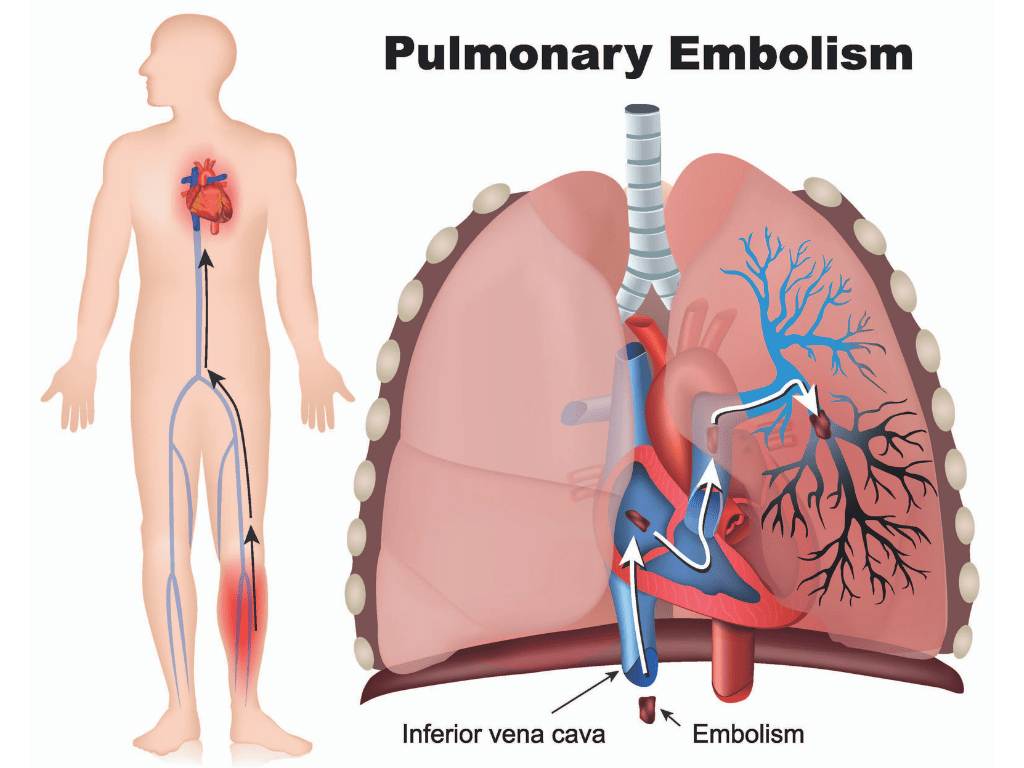MY VASCULAR HEALTH
Pulmonary Embolism

Overview
A dangerous complication of Deep Vein Thrombosis (DVT) is a pulmonary embolism (PE). This occurs when a blood clot breaks free from the deep vein and travels through the bloodstream blocking blood flow to the lungs. A large pulmonary embolism can be fatal. Therefore, you should not wait to seek treatment.
Signs & Symptoms:
- Sudden onset of chest pain and shortness of breath
- Chest tightness, difficulty breathing, cough
- Syncope
Treatment Options:
Pulmonary embolism is a life-threatening condition and requires immediate evaluation and treatment. Doctors perform various tests such as chest CT scan to diagnose PE, echocardiogram to evaluate the strain on the heart, and ultrasound of lower extremity veins to look for the source of DVT. Based on the findings, in patient’s condition, doctors will determine treatment options which vary from the use of blood thinners to catheter-directed treatments which help dissolve or remove the blood clot in the lungs.

